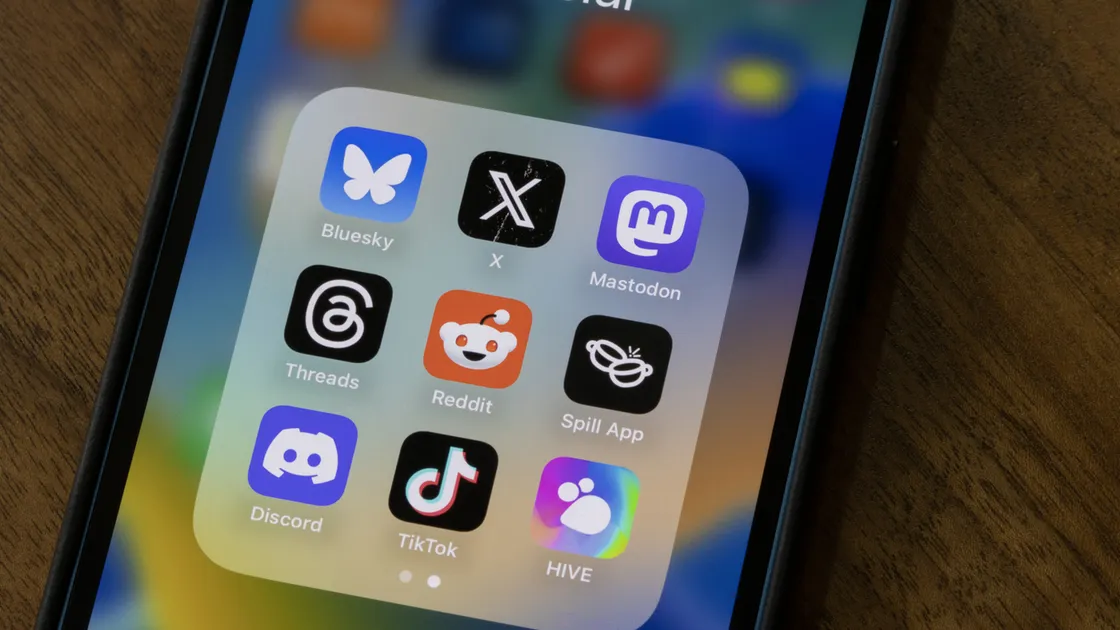Inside Influencer Marketing Survey in Japan: What 102 Companies Revealed About Strategy, Spending, and Success

As influencer marketing becomes more commonplace in Japan, how are companies actually using it—and is it working?
To answer that, hotice and RASA JAPAN conducted a data-driven survey of 102 Japanese businesses across industries including IT, food & beverage, manufacturing, and fashion. The results shed light on how brands approach influencer marketing today: where they spend, what goals they pursue, what success looks like, and where they still struggle.
Whether you’re planning your first campaign or optimizing your next one, this report offers actionable insights into how real companies are turning influencer marketing from a trend into a strategic pillar.
Why Influencer Marketing Still Matters for Japanese Businesses
Influencer marketing is no longer a fringe tactic in Japan—it’s become a widely recognized option in the digital marketer’s toolkit. Yet, our recent survey of 102 Japanese companies reveals that while many organizations have dipped their toes into influencer-driven campaigns, few have fully committed to integrating them as a core marketing strategy.
According to the results, nearly all respondents reported some experience with influencer marketing, indicating broad adoption. However, only 28.4% described the results as “highly effective”, while the majority (51.0%) said they “somewhat felt an impact.” This gap between implementation and confidence suggests that many brands are still treating influencer marketing as experimental, rather than strategic.
This hesitancy may stem from several factors:
- Unclear performance attribution: Without strong internal frameworks for measuring return on investment (ROI), even positive results can feel anecdotal or difficult to scale.
- Misaligned expectations: Some brands may expect immediate conversions, when in reality influencer marketing is often better suited for upper- and mid-funnel goals like awareness, perception, and consideration.
- Executional complexity: Selecting the right influencer, coordinating messaging, and managing campaign assets can be resource-intensive, especially without in-house expertise.
Despite these barriers, influencer marketing continues to matter—perhaps now more than ever. In an era where consumer trust in traditional advertising is waning, third-party voices offer a level of credibility and relatability that branded content often lacks. For Japanese businesses facing saturated media environments and increasingly fragmented attention spans, influencers offer an agile, authentic, and scalable way to reach modern audiences.
But for that potential to be realized, influencer marketing must be more than a trend—it needs to be treated as a strategic discipline.
Who’s Doing It: Industries and Goals
Influencer marketing is no longer confined to flashy consumer brands or youth-oriented services. It is now being adopted across a variety of industries in Japan, with different sectors leveraging it for distinct strategic purposes. From IT firms to educational institutions, businesses are increasingly experimenting with influencer partnerships as a way to humanize their communication, reach new demographics, and enhance digital presence.
But who exactly is investing in this approach—and why? Let’s take a closer look at the industries actively using influencer marketing and the objectives they are pursuing.
Which industries are active in influencer marketing?
Our survey results show that influencer marketing is gaining traction far beyond the usual suspects. Among the 102 companies that responded:
- IT & Telecommunications (27.5%)
- Education & Human Resources (12.7%)
- Advertising, PR, and Marketing (11.8%)
- Manufacturing & Consumer Goods (10.8%)
- Food & Beverage (8.8%)
- Other industries such as trading, finance, apparel, and retail also appeared, though in smaller numbers.
The presence of B2B and industrial sectors suggests that influencer marketing is evolving into a legitimate communication channel even in conservative domains, often used for employer branding, product education, or brand repositioning.
Top goals: Branding, sales, and hiring
So, why are these companies turning to influencers? The most frequently cited goals include:
- Brand recognition and positioning (57.8%)
- Sales promotion and conversion (46.1%)
- Talent acquisition and employer branding (40.2%)
- Encouraging user-generated content (35.3%)
- Basic awareness-building (29.4%)
While branding remains the primary objective, nearly half of respondents also cited hiring and sales as key motivators, indicating a broadening use case. In particular, companies are using influencers not just to promote products, but also to signal corporate values, attract talent, and foster community engagement.
This diversification of goals signals the maturation of influencer marketing in Japan—it’s no longer just about buzz. It’s becoming a flexible, multi-purpose tool for brands seeking both external growth and internal impact.
How Much Are Companies Spending?
Budgeting is often the first practical hurdle for companies exploring influencer marketing. How much is “enough”? What do others spend? Our survey offers a grounded look into current investment behavior among Japanese businesses.
Here’s how budgets break down:
- Under ¥100,000 JPY — 28.4%
- ¥300,000–¥500,000 JPY — 27.5%
- ¥500,000–¥1,000,000 JPY — 18.6%
- ¥100,000–¥300,000 JPY — 15.7%
- Over ¥1,000,000 JPY — Less than 10%
This data reveals a clear pattern: the majority of companies operate within a mid-range investment zone, generally between ¥100,000 and ¥500,000 per campaign. Only a small percentage exceed the million-yen mark—suggesting that while interest is high, most campaigns are still relatively cautious in scale.
Several implications emerge:
- Influencer marketing in Japan is still in a test-and-learn phase for many companies.
- Smaller budgets reflect limited internal resources, risk aversion, or lack of proven frameworks.
- There is a perceived cost-efficiency to influencer campaigns, especially compared to mass media.
However, spending alone doesn’t guarantee success. In fact, companies that reported high satisfaction with their campaigns often emphasized strategic alignment and creative quality over budget size. For brands considering their first steps, this means that even modest budgets can yield impact—if paired with clarity of purpose and the right execution partners.
Where Campaigns Are Happening
Choosing the right social platform is a pivotal decision in influencer marketing. It determines not only the audience you reach, but also the style, format, and tone of your campaign. Our data shows that Japanese companies are actively leveraging a variety of platforms—but with some clear favorites:
- YouTube (59.8%)
- Instagram (52.0%)
- X (formerly Twitter) (51.0%)
- TikTok (39.2%)
- Facebook (29.4%)
- LinkedIn (10.8%)
YouTube leads the way, signaling that long-form or high-production-value content still holds strong influence. However, Instagram and X are nearly as prominent, favored for their blend of visual storytelling and conversational engagement. TikTok’s strong performance (used by nearly 4 in 10 brands) points to its rapid rise among younger audiences and its appeal for entertainment-driven messaging.
While these figures suggest clear trends, most companies are not limiting themselves to a single platform. Instead, they’re pursuing multi-platform strategies—choosing combinations like Instagram + TikTok, or YouTube + X, based on their audience segments and campaign goals.
The decision often reflects:
- Demographics (e.g. TikTok for Gen Z, LinkedIn for professionals)
- Content format (e.g. short-form vs. long-form)
- Engagement style (e.g. broadcast vs. dialogue)
In short, there’s no one-size-fits-all platform. The most effective campaigns start by asking not “Where are people active?” but rather, “Where is our message most likely to connect?”
How Brands Choose the Right Influencers
Selecting the right influencer is where strategy meets execution. And according to our survey, Japanese companies are moving beyond superficial metrics like follower count and looking for creators who can authentically bridge brand and audience.
When asked which factors they consider most important when selecting influencers, companies cited:
- Brand–audience affinity (53.9%)
- Proven campaign performance (47.1%)
- Follower count (47.1%)
- Creative style and worldview (45.1%)
- Posting frequency and activity (32.4%)
- Recent content quality (25.5%)
- Engagement rate (24.5%)
This tells a clear story: influencer selection is no longer just a numbers game. Affinity—how well an influencer’s persona, values, and audience match a brand’s tone and positioning—is now the top priority.
Interestingly, follower count remains important, but it’s no longer dominant. Brands are also evaluating the influencer’s creative capabilities, past collaboration success, and how consistently they post high-quality content.
In practice, this means marketers are seeking:
- Long-term credibility over short-term hype
- Real influence over vanity metrics
- Alignment in audience, not just reach
Successful partnerships are increasingly built on mutual fit and shared narrative—not just exposure. Brands that approach influencer selection with this lens tend to craft more resonant, trust-driven campaigns.
What Success Looks Like (And How It’s Measured)
Running an influencer campaign is one thing—knowing whether it worked is another. For Japanese businesses, success in influencer marketing is still primarily defined by visibility and audience interaction, not necessarily direct conversions.
When asked how they measure the success of their campaigns, companies pointed to:
- Reach/impressions (38.2%)
- Engagement metrics (likes, comments, shares) (32.4%)
- Link clicks (16.7%)
- Conversions (7.8%)
- Buzz and UGC volume (4.9%)
This breakdown suggests that most brands still see influencer marketing as a top- or mid-funnel activity. Awareness and engagement are the priority, while attribution to hard business outcomes—like purchase or registration—is a longer-term challenge.
However, this doesn’t mean performance is vague. Many companies are developing their own KPIs and working with creators to align expectations. Clicks and conversions are gaining relevance—especially as tracking tools and affiliate technologies evolve—but for now, they remain supplementary.
The message to marketers:
Match your metrics to your campaign’s purpose.
Trying to drive sales? Optimize for clicks and conversion tracking. Trying to build brand preference? Focus on reach, resonance, and shareability.
Influencer campaigns succeed not when they go viral—but when they move the right audience toward the right action at the right stage of the journey.
Challenges and Success Factors
While the value of influencer marketing is recognized, execution still presents real hurdles. In our survey, companies that had run campaigns were candid about what held them back—and what helped them succeed.
Common Challenges
Among respondents who reported difficulties (n=21), the most frequently cited issues were:
- Lack of product understanding by influencers (42.9%)
- Unclear return on investment (33.3%)
- Difficulty selecting the right influencers (28.6%)
- Choosing the right platform (23.8%)
- Lack of internal goal alignment (23.8%)
- Ambiguity in evaluating audience-brand fit (23.8%)
These responses suggest that while influencer marketing offers reach, it often fails without clear structure. When companies don’t define goals, provide proper onboarding to influencers, or select partners strategically, even promising campaigns can falter.
What Drives Success
Conversely, companies that reported success emphasized:
- High-quality creative (photos, videos, captions) (52.0%)
- Effective platform selection (48.0%)
- Strong audience engagement (36.3%)
- Good influencer-brand alignment (31.4%)
- Positive ROI (27.5%)
- Conversions to purchase or registration (16.7%)
What stands out here is that success was rarely about budget or scale. Instead, it came down to fit, clarity, and craft. Choosing the right influencer, designing content that feels natural, and targeting the right audience on the right platform were the common threads.
The takeaway?
Great influencer marketing isn’t “bought”—it’s built.
When execution aligns with strategy, and authenticity meets structure, results follow.
Ready to Make Influencer Marketing Work in Japan?
Influencer marketing in Japan is evolving—and so should your strategy. Whether you’re entering the market for the first time or optimizing your current campaigns, working with the right partner makes all the difference.
At hotice, we help global and domestic brands navigate Japan’s unique influencer ecosystem. From strategic planning and influencer matching to campaign execution and performance analysis, we offer end-to-end support grounded in data and local insight.
→Looking for results-driven influencer marketing in Japan?
Let’s build your next success story—together.






